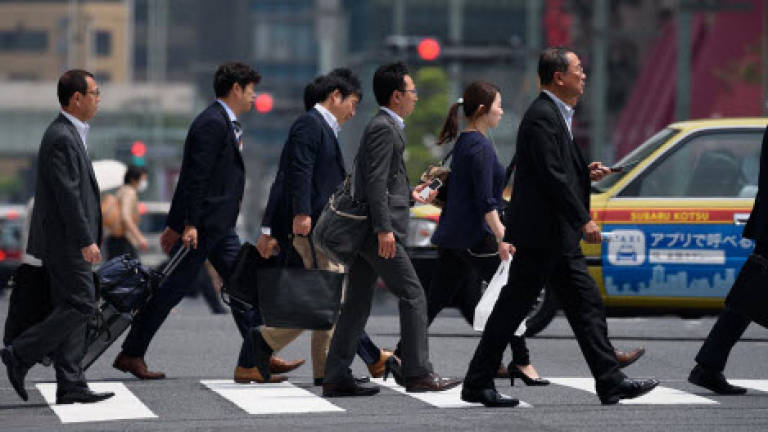Fitness in the City - Zen for healthy living

I WAS in Osaka and Kyoto recently. During that time, I wanted to find out how the Japanese stay fit as I noticed that almost no one in Japan is overweight!
Being overweight is culturally frowned upon, and an overweight person would have a hard time being accepted socially, which also translates to fewer career opportunities and advancements.
People here also seem to defy ageing. You’d be hard pressed to find any oba-sans (Japanese for makciks) who are overweight either. Women in their 40s look great. Even elderly salarymen have a vibrant look to them.
The health of the Japanese people cannot be attributed to any adherence to a particular fitness programme or diet fad. It’s a lifestyle thing.
Here are two examples:
Tabemono (food)
Is Japanese food healthier, and do the people have better eating habits? I would say yes to both questions.
For one, they consume more raw fish (sashimi) than any other nation. If meats and fish are cooked, they are mostly pan-fried or boiled. Deep-frying is rare and usually done with clean oil.
Japanese meals are low in fat, extremely varied and diverse, and often contain fish, rice, seaweed, lots of veggies, bone broth, and other healthy ingredients.
What also makes a difference is that Japanese eating habits are disciplined. Most Japanese pack lunch from home, as eating out is expensive even by Japanese standards.
Japan is home to the compact, portable bento box. The whole meal consists of a serving each of rice or noodles, meat or fish, and vegetables.
And all this is packed into a food container that fits into a suitcase or school satchel. This method of eating creates automatic portion control, so there is no temptation to overeat.
The Japanese also follow a zen rule, which originated from the teachings of Confucius, called ‘hara hachi bun me’. This roughly translates to “eating until you are 80% full”.
Green tea is the preferred drink at meals, and the Japanese drink gallons of it.
Undousuru (exercise)
I also noted no advertisements for fitness centres in either Osaka or Tokyo. In Japan, people are always doing unplanned exercise – the kind of exercise that arises through everyday living.
This is because in Japan, walking is the norm. Most people take public transportation to get around and out of the city.
In the land that gave us Hondas and Toyotas, the cities aren’t built for those owning cars at all. Parking fees are exorbitant, and parking spaces are limited.
If you live in the city and own a car, you may need to park some distance away and walk to your destination.
All this translates to having to walk to the station in the morning, stand on crowded trains, walk between transfer points, and then walk to your destination. And in between lie lots and lots of stairs.
For people of considerable girth, Japan is unforgiving. Seats on the trains are built for thin people. Public toilets leave just about enough room for one to get in and sit.
The Japanese are also neat freaks. People sweep leaves as far as 10 metres from their houses. It is impolite if the leaves from your garden fall somewhere else, causing inconvenience to others.
Children are also encouraged to work together to clean their classrooms after school, a habit that often carries over to adulthood. That’s a lot of moving around.
Remember the Look East policy introduced by former prime minister Tun Dr Mahathir Mohamad in 1981? The policy was also a message to emulate the Japanese’s habits for success.
If you have been inspired by the zen lifestyle of the Japanese, there’s no reason why you cannot adopt those principles in your own life. Better living starts with a good body and mindful eating habits.
Let’s be fit!
Jonathan Tan is the club manager of the Sports Toto Fitness Centre at Berjaya Times Square. He can be contacted at lifestyle.jonathan@thesundaily.com.